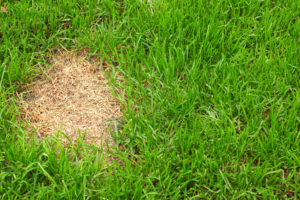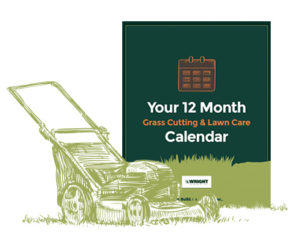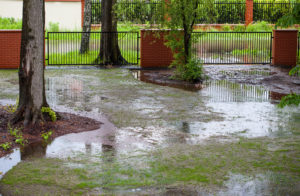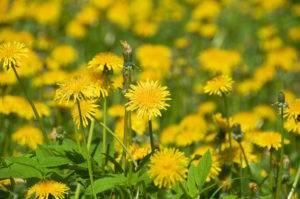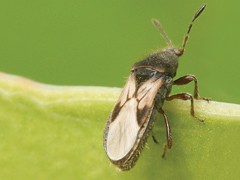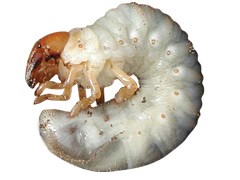At this time of year, your grass should be coming in thick, green, and healthy.
Instead, you’re frustrated with the results of your lawn care efforts because of things like:
- Dead and bare patches
- Wet, squishy areas
- Weeds
You’re not alone. It’s something we hear about all the time at Wright Landscape Services from many homeowners like you.
So, what causes these problems? How come your lawn is struggling while your neighbour’s grass looks picture perfect?
Dead and bare patches
It’s annoying (and unsightly) when your lawn is pocked with brown, yellow, or bald sports all over the place.
Here’s why that happens:
- Heavy compacted soil: If you don’t aerate your lawn properly, the soil becomes compacted. When that happens, air, water, and other vital nutrients can’t reach the roots of your grass.
- Poor soil quality: There’s a difference between soil and dirt. Soil is “alive” (full of healthy nutrients and organic elements). When soil “dies”, it becomes dirt; which has no benefit to your grass.
- Animal urine: Dogs, birds, and other animals urinating on your lawn will leave dead spots. These are easy to identify due to yellow patches surrounded by a bright, green edge.
- Drought damage from last year: Your lawn needs 1” of water/week to stay healthy. Weak spots which don’t get enough rain (or are in a very sunny area) will be impacted.
- Insect damage from last year.
Fortunately, remedying these issues is relatively simple.
For example, if your lawnmower blades are dull, get them sharpened. Or, if your lawn hasn’t been aerated in a while, have us take care of that for you.
Dead and bare patches can be repaired by aerating, topdressing and seeding. Watch this short video to learn how.
By making these simple changes, you should see drastic improvement on the look and health of your lawn over time.
Download Your Copy of The 12 Month Grass Cutting & Lawn Care Calendar
In this FREE guide, you’ll learn:
- What’s happening to your grass
- What you should do now and what to do next
GET YOUR FREE COPY RIGHT NOW
Flooding, ponding, or pooling
Poor backyard drainage (which is one of the 3 common landscape challenges homeowners must deal with) will lead to a soggy, waterlogged lawn.
There are a few reasons why this can occur:
- Sloping or depressions: Gravity is the enemy. If your lawn is at the bottom of a hill or slope, water will naturally collect there. A minor slope can be leveled out. A major slope may require a drainage ditch.
- Substandard soil: Soil types like clay are not water-absorbent. Compacted soil (mentioned earlier in this blog) keeps water on the surface and prevents it from seeping underneath.
- The water table: The water table is the depth underground that’s full of water. A “high” water table means that any build-up of water below the surface will eventually flood over.
If the water table is your issue, your best option is to build a comprehensive drainage system.
On the other hand, if soil is the culprit, you have a few solutions to choose from:
- Firstly, you can add a thin application of sandy soil or topdressing mix to fill depressions. Be sure to aerate the lawn first.
- Get a professionally designed drainage system installed that will remove the water from the affected area. This could include a dry well, French drains or underground piping.
- Re-grade the area so that it drains. This may require re-sodding an area.
- Check to see what the source of the water is and re direct it, if you can, so that it does not end up in the low area.
- You can also reduce compaction by keeping people and pets from stepping on your grass by building a dedicated stone walkway or using stepping stones. Aerating the lawn will help to reduce compaction over time and will lead to better drainage.
Too many weeds
There’s an old saying (attributed to the Greek philosopher Aristotle) which goes “nature abhors a vacuum.”
In short, it means that any empty spot will be filled with something.
When it comes to your lawn, those bare spots or dead patches are perfect areas to be overrun with annoying, pesky weeds.
The most common grass weeds are:
- Bermuda grass
- Crabgrass
- Dandelions and other broadleaf weeds
When those weeds take over a dead spot, it won’t be long before they try to consume the rest of your lawn by stealing vital water, sunlight, and nutrients away from the grass.
The moment you notice any weeds encroaching on your lawn is when you should start pulling them out by the root, or spray them with the proper control product available at your local hardware store or garden centre.
Disease and pests
Sometimes, your lawn is susceptible to fungal diseases or invasive insects, such as:
- Grubs: If you can pull up your lawn like a carpet, that’s a sure sign it’s been infested with grubs. And it only takes a small amount (10 grubs per square foot) to cause serious damage.
- Chinch bugs: As the weather heats up, pay attention to sunny/hot areas of your lawn (especially next to natural stone walkways and driveways) and look for insects smaller than an ant. They have many different colours as they go through their life cycle, but the most common is the nymph with a red or black body and a white line across its back or the adult with a white x on its back.
- Fungal disease: Early spring and mid-summer are ideal conditions for fungal disease (Dollar spot – identifiable by circular brown spots or thinning grass blades; or Snow Mould – moldy like areas right after snow melt.).
Let us take care of your lawn for you
On one hand, you want to have a beautiful, green lawn you can be proud of.
On the other hand, you don’t have the time or experience to do it properly and thoroughly.
But we do.
Our team of lawn care experts can develop a custom lawn care program to keep your grass in tip-top shape all year long.
We’ll do the work. You enjoy the results.
Contact us for a FREE quote. We’ll get back to you ASAP with the information and answers you need.
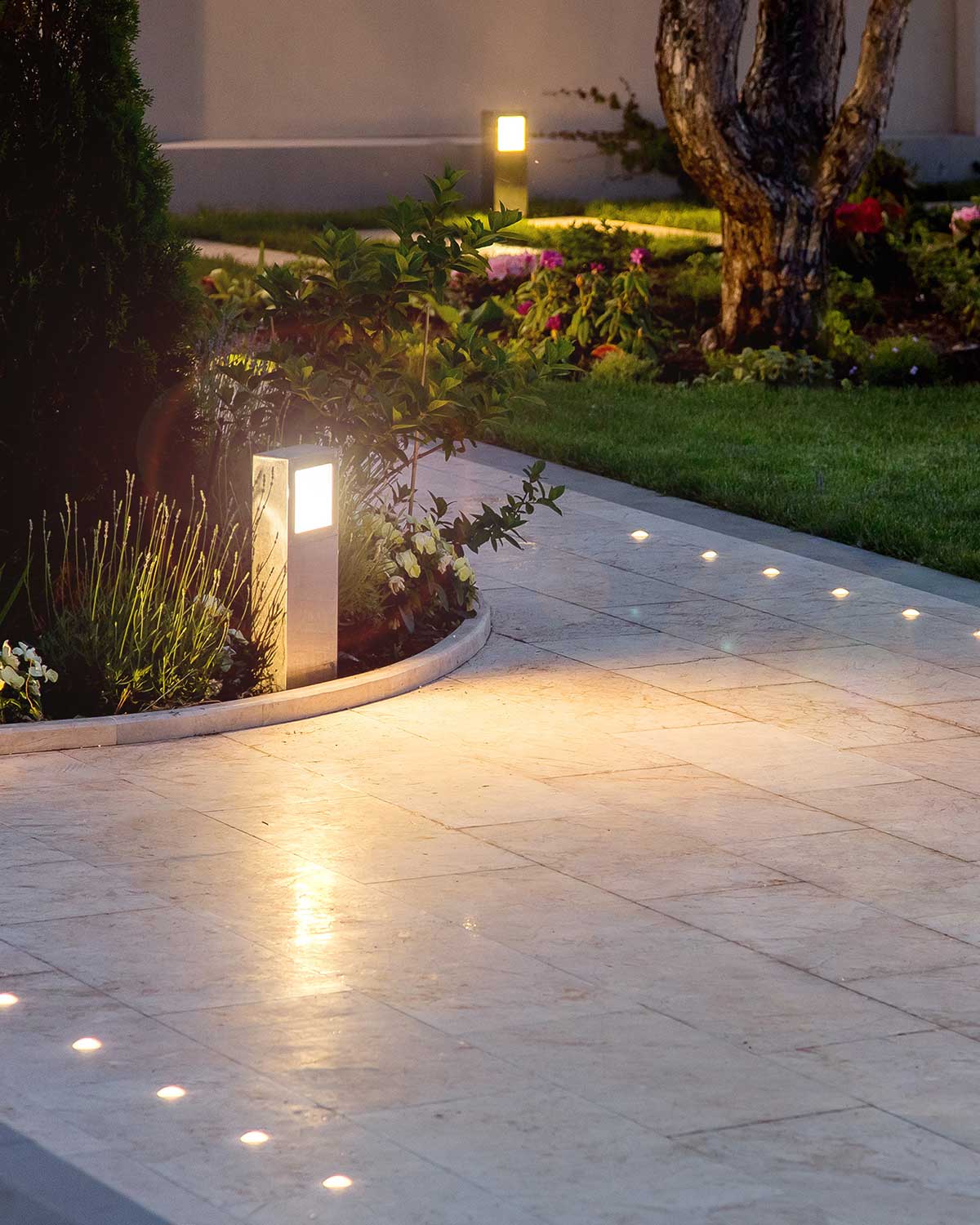
Need inspiration?
When you start to think about designing the perfect yard, deck, patio or backyard oasis, it can be helpful to have some solid ideas of what you want to achieve. We can help with that.

